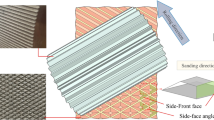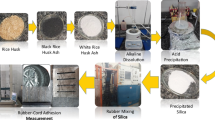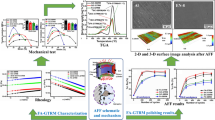Hevea brasiliensis
) as a raw material for high-volume furniture production, information on its sanding properties is relatively sparse. This study was carried out to provide some fundamental understanding of the sanding properties of the material, from an industrial perspective. The results suggest that the sanding process is suitable for low to moderate stock removal, for it ensures optimal process economics. Further, silicone carbide abrasive belts perform better than aluminum oxide abrasive belts for the sanding of Rubberwood. A simple method was used to estimate the economic belt life, which will help derive effective belt change schedules in order to enhance the productivity of the process.
Similar content being viewed by others
Author information
Authors and Affiliations
Rights and permissions
About this article
Cite this article
Ratnasingam, J., Reid, H. & Perkins, M. The abrasive sanding of Rubberwood (Hevea brasiliensis): an industrial perspective. Holz als Roh- und Werkstoff 60, 191–196 (2002). https://doi.org/10.1007/s00107-002-0285-1
Issue Date:
DOI: https://doi.org/10.1007/s00107-002-0285-1




